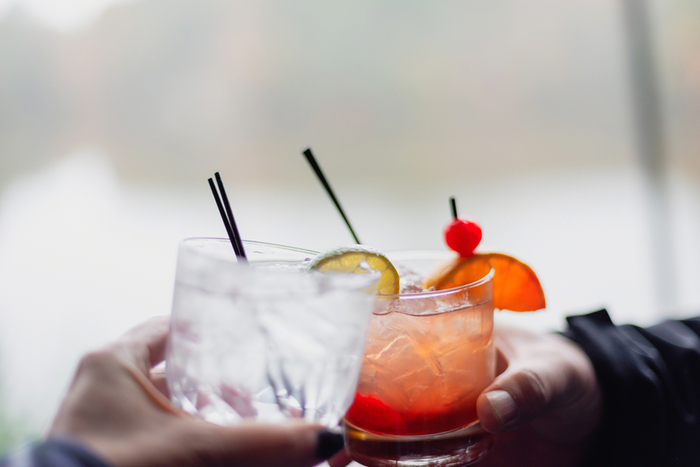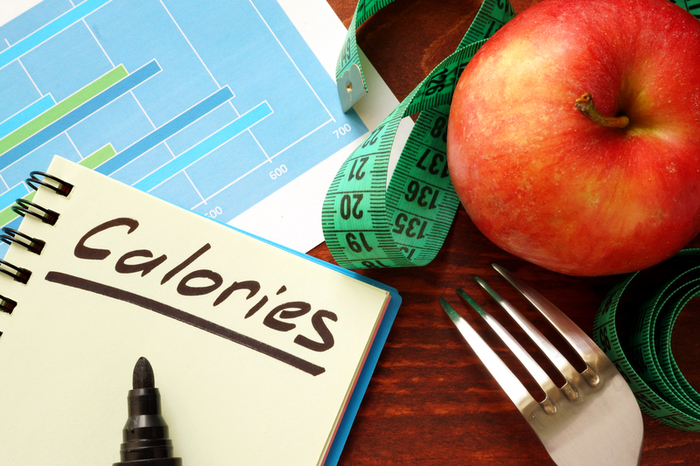- Calls to this hotline are currently being directed to Within Health or Eating Disorder Solutions
- Representatives are standing by 24/7 to help answer your questions
- All calls are confidential and HIPAA compliant
- There is no obligation or cost to call
- Eating Disorder Hope does not receive any commissions or fees dependent upon which provider you select
- Additional treatment providers are located on our directory or samhsa.gov
Drunkorexia: Key Considerations for Young Men Drinking While Underfed

For many young people, drinking alcohol is the norm while attending college. But just because the pastime is normalized, doesn’t mean it’s consequence-free.
One 2022 study found 93% of the college students surveyed reported drinking alcohol in the past three months, with alcohol use being higher in college students compared to non-college youth. [1]
But hand-in-hand with this type of lifestyle can come issues around drinking and disordered eating behaviors. And “drunkorexia,” a term that refers to a combination of disordered alcohol and food-related behaviors, has also been a noted trend at universities. [2]
What is Drunkorexia?
“Drunkorexia” is a portmanteau, combining the “drunk” aspect of excessive alcohol consumption with the “-rexia” associated with anorexia nervosa (AN), an eating disorder characterized by an extremely limited diet.
Similarly, the condition describes a combination of excessive drinking behaviors paired with disordered eating behaviors.
Those with drunkorexia generally engage in binge drinking behaviors, while also severely limiting their food intake or engaging in forms of purging, such as self-induced vomiting or excessive exercise.
These disordered eating behaviors are used to compensate for the caloric intake of binge drinking, increase the intoxicating effects of alcohol, or both. [3]
What Does Drunkorexia Look Like?
Drunkorexia may look similar to alcohol use disorder (AUD) or an eating disorder, with compensatory eating behaviors occurring before, during, or after alcohol consumption.
Some people may restrict calories in anticipation of heavy alcohol consumption. This can either be to make up for calories, or to feel more intoxicated by drinking on an empty stomach. [3]
Others may feel shame or guilt following a binge drinking episode and engage in compensatory behaviors such as self-induced vomiting, diuretic or laxative use, food restriction, or exercise in an attempt to offset the calories consumed from alcohol. [3]
The relationship between food and alcohol in drunkorexia is also believed to be bi-directional. That means the consumption of one substance can influence the consumption of another, i.e. as alcohol intake increases, food consumption decreases, and vice versa. [2]
Causes Behind Drunkorexia
Drunkorexia is likely caused by a variety of factors, some of which have been borne out through research.
Studies have found that one of the primary motivations behind the disordered eating behaviors associated with drunkorexia was to compensate for calories ingested from drinking. [7]
Second to that motivation was the desire to get intoxicated faster. And a subset of participants said they would intentionally drink excessively to help them vomit, in order to compensate for calories consumed. [7]
Research on the topic is still new and ongoing, so other driving factors, including any connection to alcohol addiction or eating disorders, has yet to be determined.
Who Is Impacted by Drunkorexia?
The relationship between drunkorexia and gender seems to be shifting. While once thought to predominantly impact males, new studies on the subject have found more nuanced results.
In 2016, an Australian study found an estimated 57.7% of women reported engaging in behaviors associated with drunkorexia. [4] And another study found no significant difference between the number of college-aged men and women who engaged in at least one behavior associated with drunkorexia. [5]
Still, information compiled by yet another research firm found drunkorexia was most prevalent among men, with 43% of male participants choosing alcohol over food, compared to 35% of females. [6]
Drunkorexia Risk Factors for Men
Currently, there is little research on gender-specific risk factors for drunkorexia. However, previous studies have identified some key risk factors for both disordered drinking and eating behaviors in males.
While generally underreported, young men also experience body dissatisfaction and feel pressure to attain a male body ideal. Research also shows that men who are dissatisfied with their bodies are more likely to report disordered eating, lower self-esteem, reduced quality of life, symptoms of depression, and psychological distress. [9]
Furthermore, in the college environment, men report more social pressure to drink, embarrassment about expressing drinking-related concerns, and belief that expressing concerns about drinking alcohol will create greater difficulties in fitting in. [10]
The combination of social pressure to attain the ideal male body and peer pressure to drink alcohol at college could theoretically increase a man’s risk of developing behaviors associated with drunkorexia.
Signs and Symptoms of Drunkorexia
If you’re concerned that you or a loved one has developed disordered behaviors around alcohol and food, there are some notable signs and symptoms of drunkorexia to look out for, which include but are not limited to: [3, 6]
- Restricting food before or after binge drinking
- Engaging in purging behaviors such as self-induced vomiting, using laxatives and diuretics, and enemas.
- Boosting exercise to compensate for calories from drinking
- Drinking low-calorie or sugar-free alcoholic beverages
- Calorie counting
- Stomach and digestive complaints, such as abdominal pain, constipation, and diarrhea
- Weight fluctuations
- Lack of inhibition
- Increased aggressive behavior
- Engaging in risky behaviors
While these factors don’t necessarily indicate someone is struggling with drunkorexia, they may point to deeper concerns over someone’s drinking or eating behaviors, which can potentially lead to the condition.
Health Consequences of Drunkorexia
Skipping meals and/or restricting food and drinking excessively are both detrimental for mental and physical health. When combined, the behaviors can lead to a number of potential health consequences, including: [6, 8]
- Acute alcohol poisoning
- Memory lapses
- Increased risk of injury
- Blackouts
- Depression and anxiety
- More disordered eating
- Impaired cognitive function
- Nutritional deficiencies
In the long-term, drunkorexia can have similar consequences of long-term alcohol misuse, increasing the risk of chronic conditions such as liver and heart disease, brain damage, and some types of cancer. [6]
Finding Help for Drunkorexia
If you or a loved one are struggling with drunkorexia or related thoughts or behaviors, it’s important to seek help. These types of habits can lead to long-term physical and mental health consequences.
If you’re unsure where to start, your university health center, primary care doctor, or another trusted medical professional, such as a therapist, can be a helpful resource. These professionals will likely be able to offer advice or help you determine your best next steps.
If you’d rather not talk about such a sensitive topic in-person, there are also a number of mental health and eating disorder hotlines that can provide additional resources and information.
Regardless of where you look for help, the most important thing you can do is seek it. Battling disordered drinking and eating behaviors may seem impossible, but with the right kind of treatment, you can start on the path toward a healthier and happier future.
Resources
- National College Health Assessment III: Undergraduate Student Reference Group Data Report Spring 2022. (2022). The American College Health Association. Accessed April 2023.
- Griffin BL, Vogt KS. (2021). Drunkorexia: is it really “just” a university lifestyle choice? Eating and Weight Disordorders; 26:2021–2031.
- Drunkorexia 101: Increasing alcohol’s effects through diet and exercise behaviors. (2016, June 27). ScienceDaily. Accessed April 2023.
- Knight A, Castelnuovo G, Pietrabissa G, Manzoni GM, Simpson S. (2016). Drunkorexia: An Empirical Investigation among Australian Female University Students. Australian Psychologist; 52(6):414-423.
- Carroll L. (2016, July 23). ‘Drunkorexia’ prevalent among college students, study finds. NBCUniversal News Group. Accessed April 2023.
- Ali A. (2016, August 16). The worrying trend of ‘drunkorexia’ is becoming prolific among young people. The Independent. Accessed April 2023.
- Rahal CJ, Bryant JB, Darkes J, Menzel JE, & Thompson JK. (2012). Development and validation of the compensatory eating and behaviors in response to alcohol consumption scale (CEBRACS). Eating Behaviors; 13(2):83-87.
- Ali A. (2016, June 30). More than half of female students are adopting the worrying trend of ‘drunkorexia’. The Independent. Accessed April 2023.
- Frederick DA, & Essayli JH. (2016). Male body image: The roles of sexual orientation and body mass index across five national U.S. Studies. Psychology of Men & Masculinity; 17(4):336–351.
- Suls J, & Green P. (2003). Pluralistic ignorance and college student perceptions of gender-specific alcohol norms. Health Psychology; 22(5), 479–486.
The opinions and views of our guest contributors are shared to provide a broad perspective on eating disorders. These are not necessarily the views of Eating Disorder Hope, but an effort to offer a discussion of various issues by different concerned individuals.
We at Eating Disorder Hope understand that eating disorders result from a combination of environmental and genetic factors. If you or a loved one are suffering from an eating disorder, please know that there is hope for you, and seek immediate professional help.
Published July 14, 2023, on EatingDisorderHope.com

